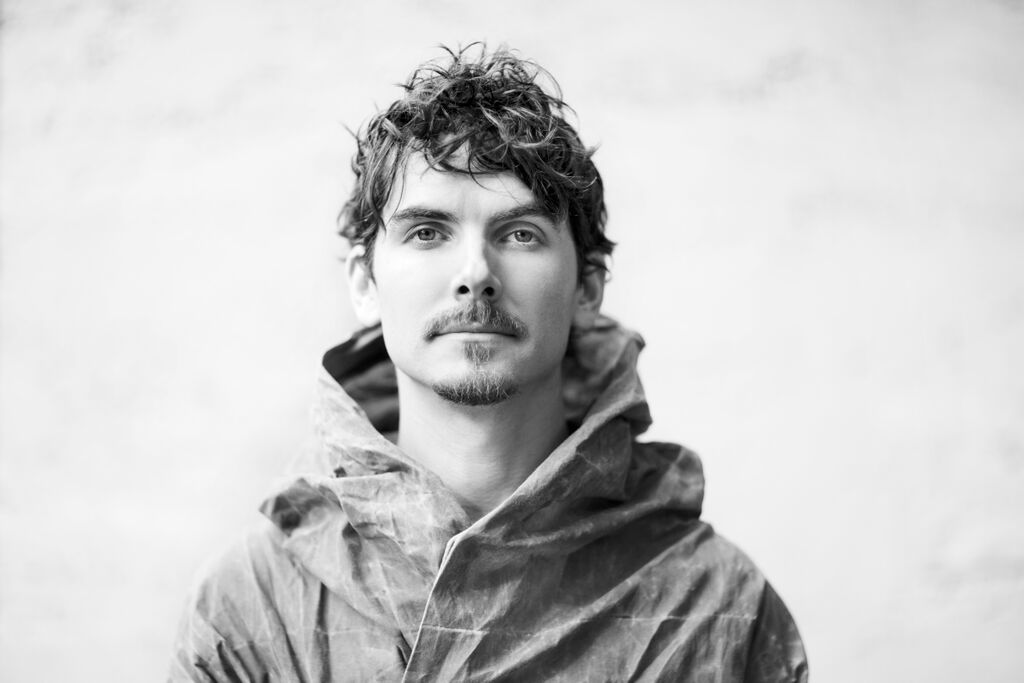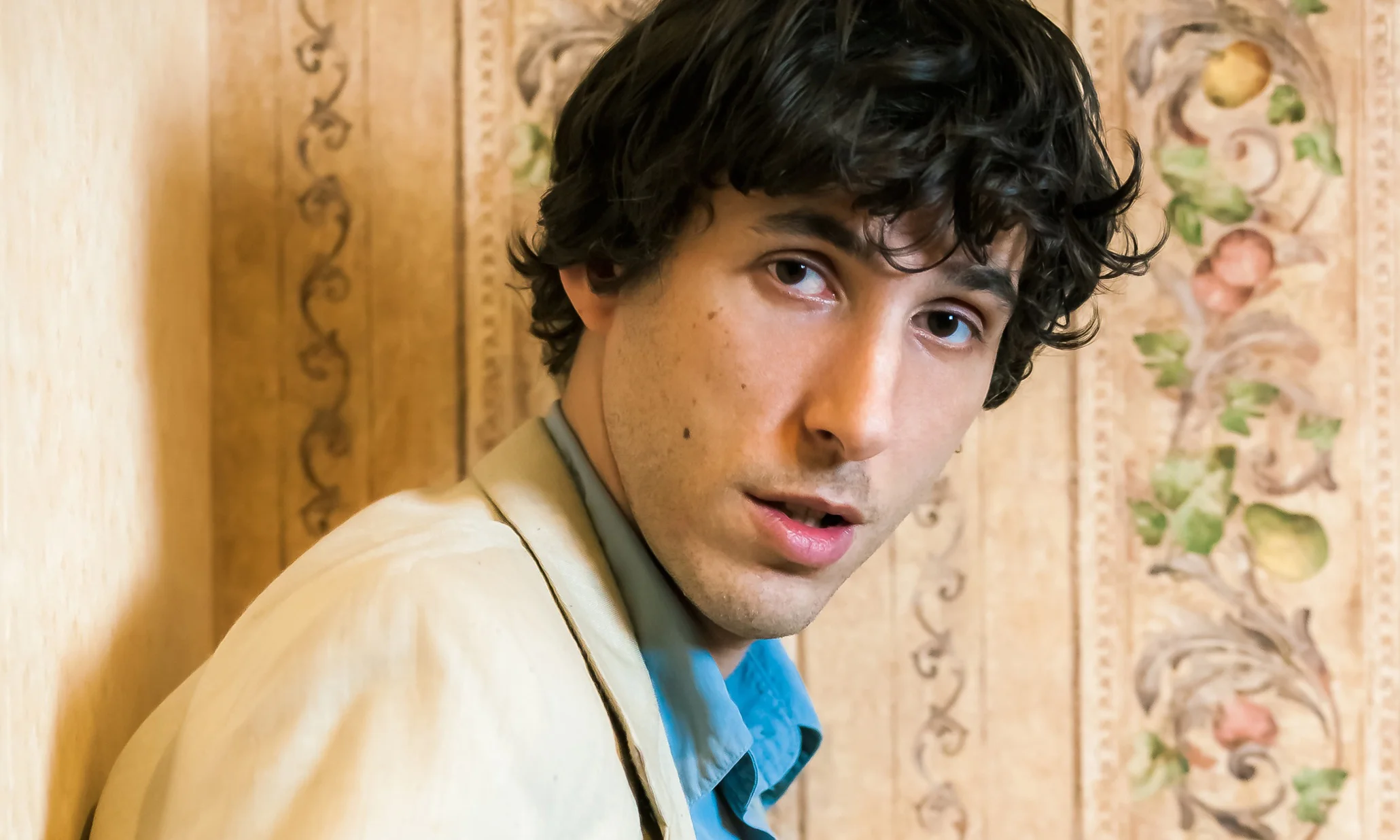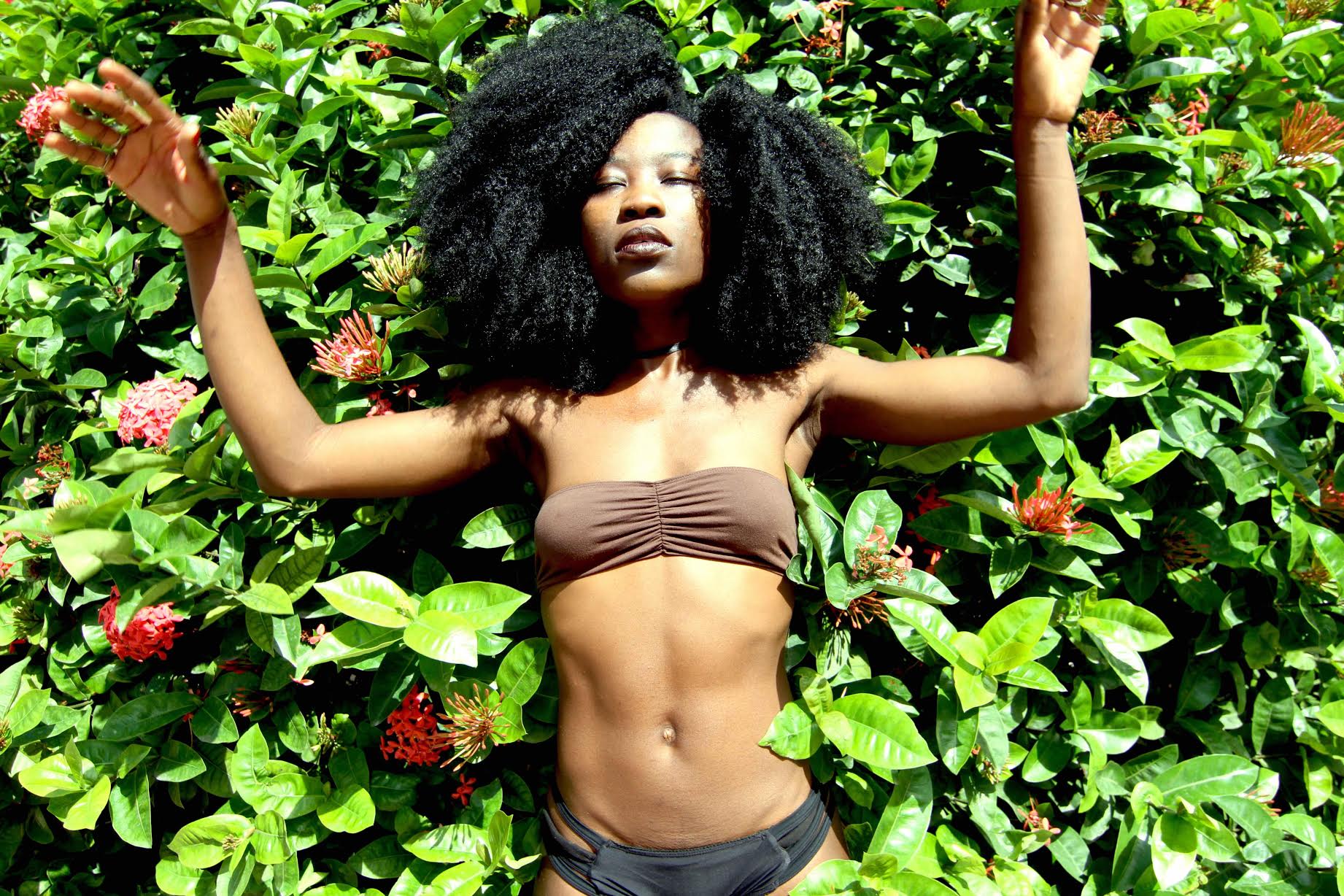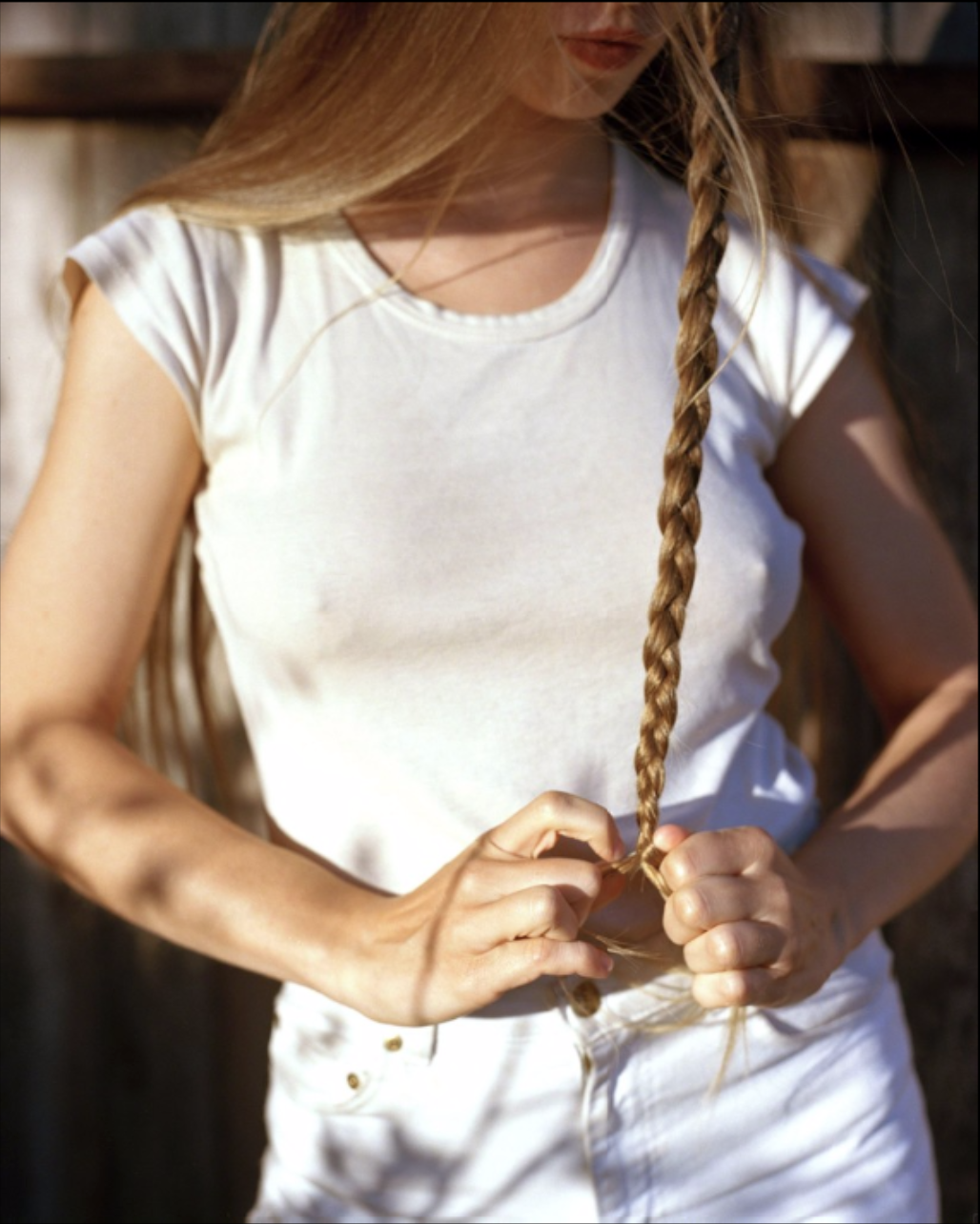Brendan Angelides, better known by his stage name Eskmo, is one of those rare musical artists and composers that can combine the natural sounds of the earth and digital elements with a romantic, alchemical simplicity that is orchestrally abstract, but also extremely beautiful - like a soundtrack for a flying dream. Eskmo has used samples of field recordings from Icelandic glaciers, the rain falling in Berlin, tour bus fan noises while passing through the American Midwest, and parking garage construction in San Francisco. Indeed, Eskmo is a constant diarist of sound and vision. His latest album, SOL – which was released back in March – takes a slight departure from his previous albums, but still holds true to the lineage of using samples and drum beats – it is also rife with Eskmo’s discernible aural brush strokes that are cinematic and otherworldly. The only difference is the grandiosity of scale and concept behind the album – combining traumatic life effects (which is delves into details in the following interview) and the entire celestial body of the sun as conceptual inspiration. With SOL, Eskmo may have conceived one his most personal, but also one of his best albums – an album that sees him poking out of the drum and bass pigeon hole that music journalists and critics have tried to put him into over the last decade. It is also proof that Eskmo has many sonic avenues to travel. With SOL, you can hear the power of the album after the first note – like a magnetic flare bursting through the darkness of space. In the following interview, Eskmo talks about his artistic journey as a composer, the inspirations behind SOL, his entrance into the Echo Society (a collective of Los Angeles based composers), and the music he likes to listen to at home.
Joe McKee: First of all, why so long in between records? Four years might not be that long to some, but it’s a significant time to develop ideas and to work on new material. What was the reason for the gap?
Eskmo: Logistically, I actually wrote a bunch of stuff in 2011 and 2012, but it was so far from what my other album was that Ninja Tune wasn’t even into it. I sat back with that, and I decided to release that material as two EPs—quietly, digitally on my own label. Just to hold onto the stuff in case anything were to happen.
JM: What was the gist of those EPs? Can you give me an idea of why it was such a big departure from the previous album?
Eskmo: For me, it wasn’t that big of a departure. I think [the record label was] at a particular place in which I had a certain buzz around me at a certain time. I was working with Amon Tobin. I had done a couple of things where I think they had a very particular idea of what I would do. They put out the first one just to see how it would go from there. I think they had a particular idea of the aesthetic that I would keep going in, which wasn’t my idea of myself. My new stuff sounded more like Peter Garbriel. I was like, “That’s awesome! Isn’t that cool?” But that’s not what they wanted. They’re focused on a particular aesthetic. For me, so many different things were happening in my life in 2011 and 2012—the songs reflected that. There were things that were way over there and some things that were way over here. Proper heartbreak, proper crazy travel.
JM: Being pulled in different directions, and the music follows that.
Eskmo: It was all genuine and very authentic. It was still melodic, still sound-design-y, but it was pulled in different directions.
JM: When you talk about sound-design-y, could you elaborate on what you mean by that? Are you talking field recordings involved?
Eskmo: Not even necessarily field recordings involved, but more so the idea of creating the craziest type of sound possible doesn’t inspire me that much at that point. I didn’t relate writing that material. I did a little bit before that. The Eskmo album, the one with “Cloudlight” and stuff, was very methodical, very clinical-sounding, very precise. After, it didn’t make sense to ask, what kind of crazy new type of sound can I create out of this? I was genuinely feeling more inspired by more simple melodies and song structure. I was like, “Oh, that’s engaging to me,” instead of trying to make some crazy-sounding thing.
JM: When, you’re creating a record, when you’re sculpting that world, what are your parameters?
Eskmo: I think I have a sound palette, to a degree. Over the years, I’ve refined my ability. Specifically drum and bass taught me this years ago. Here’s a tiny little box—what can you do with that box and be creative? Taking that as a formula and applying it, I have been able to do that in different ways. With this [current] album, contextually, I started out just wanting to write an album that sounded like the sun. I wanted this big sound. My biological dad passed. I had record label stuff. Big things in my life were shifting. So the first, initial impulse—the sun thing—happened. A couple of tracks came out of that—“Sol” and later “A Thousand Furnaces.” Then, as the year went by, as I working on more of it, stuff would come up. Oh, wow, this is clearly a heartbreak song. Here’s another one, this is a very human, heart-on-sleeve song. Another song, “Blue & Grey,” I’m literally singing about a blue heron—fucking get more hippie than that. It felt right to me. Looking back at it, that’s why I started to associate it with yes, the sun, but there’s also really human stuff in here. The idea of the moon coming in was in relationship to a female-personified figure. It had to do with authenticity, too. At one point during that writing process, I was trying to force writing an album about the sun. Why am I writing these tender things? But I decided I needed to just do that and see where it goes.
JM: What does authenticity mean to you, musically?
Eskmo: My personal relationship to it is a sense of vulnerability, a sense of being honest with that process. My version of authenticity would be not controlling that pre-ordained narrative of needing a particular type of song, a particular type of aesthetic. For example, the show at MAMA Gallery—I wouldn’t have done that a year and a half ago, man. I’ve had a hard time, in the past, even inviting friends over for dinner, nevermind inviting 70 people come to the gallery and watch me sweat and struggle in these very vulnerable positions. For me, that’s the authenticity in my understanding of it. I’m pushing myself while being very honest. Participating in that dynamic actually fueled the record, too. The same type of thing that I was experiencing emotionally and psychologically during the photo shoot was part of the album-writing process.
JM: Exposing yourself, breaking down the walls that you build. Letting people in, letting people understand the process. It’s more of a naked process that way.
Eskmo: A band that’s inspired me for a few years now—it’s rad to watch them progress—is Future Islands. Samuel Herring—I view him as a very authentic, vulnerable human. He’s just wearing his heart out there. Combined with his charisma, that’s why I seem him excelling right now. You have this guy saying, “This is me.”
JM: Beautiful thing to witness. On that note of inviting people in and taking down those boundaries that you may have previously built, with whom have you been collaborating? Who is instigating those collaborations?
Eskmo: Particularly on the album, the album artwork—
JM: I love that artwork; it’s beautiful. What is it looking down at?
Eskmo: A feather sculpture. Check out her stuff—Kate MccGwire. Her stuff is rad. Some of her art installations have feathers coming out of a pipe, and going out to walls. Amazing, alien-looking stuff. Also, the back cover is a wooden sculpture by my friend Aleph Geddis. That’s become a huge, integral part of the album theme. We worked with it in the music video too—we projected the geometric lines of the shape onto it. I can’t say this yet, because we’re just talking about it, but we’re working on making hollow versions of his geometric sculptures—50 to 100 of them—to sell along with the vinyl as a bundle-package. Also, my friend Dean Grenier is working on the art direction. That collaborative process—allowing people to do what they’re good at—I thrive in it. I think, in the past, I wanted more control. Particularly around the album and how the tour is going to go, I’m being more open to other people’s ideas instead of being more controlling.
"Looking back at it, that’s why I started to associate it with yes, the sun, but there’s also really human stuff in here. The idea of the moon coming in was in relationship to a female-personified figure. It had to do with authenticity, too. At one point during that writing process, I was trying to force writing an album about the sun. Why am I writing these tender things? But I decided I needed to just do that and see where it goes."
JM: At what stage did the visual artists on the record come on board?
Eskmo: The album art was after. Aleph—I’ve been friends with him for years, and I’ve always loved his sculptures. I wanted to work with him. The other artists—I didn’t know how to make that happen, until I decided I wanted to work with Kate. That feather sculpture, she already made that. The aesthetic—the feather thing was organic, alien, clean, minimal—what would work in tandem with that? Some of Aleph’s photos one morning, holding a wood block over his head—I was like, “This is it. This makes so much sense for me.” That process has been step-by-step, seeing it progress. It turned into a thing where I was literally using his shapes during the music video, too. I was integrating feathers into the music video, too, which hadn’t been a part of it at all. Also, working with Dylan, the actual animator that was doing—that process was letting him do what he’s really good at.
JM: There’s a performative element to it.
Eskmo: 100%, man. Coming out of a place where I hadn’t really done any collabs—I had turned into this lone wolf thing—right now, I’ve been breaking out of that. The collaborative process is still new for me. It’s only been a year and a half of breaking out of that shell. I’m step-by-step. When new things come in, I allow it to flourish instead of trying to control it into a very specific kind of direction. In some ways, I’m taking baby steps, to be honest.
JM: Okay, what is the Echo Society, what is it, and how did it come about?
Eskmo: The Echo Society is a collective of composers, musicians, and artists in LA. We’ve put on two events so far with a chamber orchestra. We had a couple of guests for each show. Everyone, essentially, writes one piece for the whole ensemble that’s put together. It’s all LA-based musicians. We had seen a couple shows in LA before we did the first one, before we started talking about it. Other musicians were brought in from New York and stuff. There was one particular show that inspired us to do something more LA-based. We were inspired to do something better, to be honest. So we started talking about it. This came organically out of hanging out with a bunch of music nerd bros. We were just going to Disney Hall, to the Greek, and we decided—what would happen if we just threw our first one? It organically happened. Most of the other guys are doing film stuff—aside from David, who is doing electronic stuff, too. It just happened.
JM: Sweet. Do you have any other artists that you consider your peers creatively? Particularly in LA, but elsewhere too. Are there people you’re in communication with regularly that you might feel in competition with? Or feel inspired by, creatively? It doesn’t have to be musically, necessarily.
Eskmo: I’m definitely inspired by Rob Simonsen, one of the guys in Echo. He’s become really, such a solid hope for me. I’m inspired by his work ethic, how he’s built the work he has. Watching him work on different films.
JM: What’s he been working on?
Eskmo: The last thing he did was Foxcatcher. He scored that whole thing.
JM: How did he get into that world?
Eskmo: Oftentimes, in film, you’re an understudy for another composer. You do a whole bunch of work for them. He was with Mychael Danna—he did Moneyball and Life of Pi. He was doing his own score, but working with him. Then, it gradually got to the point where he was offered his own role. He did The Way Way Back. He’s in a handful of things right now. He’s working on something for the guy that did Independence Day. I’m actually getting to work on my first film score now, too.
JM: What are you doing? I know you’ve done some scoring for short films. “Memory 2.0” is one that I saw. What else have you done, scoring wise?
Eskmo: I’m brand new. Just this one that I’m working on right now. That was the goal of this album—to move past the idea of being a hyper-sound pointing artist. I wanted to write some pieces that were thematic, ethereal, and cinematic in general. And I wanted to present that alongside the Echo Society to put myself out there, so that I can do that work here in LA. That’s the direction, at least. I don’t know what’s going to happen.
JM: Let’s talk about rituals. I noticed, before you started eating, you bowed your head and took a minute before you ate. What other kind of rituals do you have creatively? Is there anything you need to do before you enter this creative process?
Eskmo: I try my best to meditate every morning. I pray every morning. I give thanks for being able to breathe. Ritual-wise for music, there’s no specific thing I do other than grounding myself. But I don’t even do that all the time. If anything, I try to tap into what’s happening in my life, which I think any other artist does. What’s occurring for me? How can I express this honestly? I just let that carry me. That 90% of the time what happens. The other 10% is methodical. What’s happening out in the world? How can I, potentially, do my own expression of that? But usually it’s, what am I genuinely feeling? How can I get this out? Later, I go back and contextualize it.
JM: Tell me about the deaf music program you’ve been putting together.
Eskmo: We haven’t actually started it yet, so I don’t know if I should speak on it. I did an AV show last April in a movie theatre with some guys. My friend David Strangeloop. We were standing in front of the movie screen, doing the visuals that were synced up to the music. I’ve been working with this company called Subpac, which makes these vibrating bass packs. We brought thirty of them into the theater, and had people sitting with them—watching the visuals, hearing the music, and then feeling the vibrating bass pack. it’s very specific too. The lower frequencies hit down and goes all the way up your back as it rises. From that, I got inspired to do a show like this, but for deaf kids, for kids that can’t experience music in the traditional way.
JM: That’s a really exciting project.
Eskmo: I’m stoked about it. For me, working with kids, using technology—the biggest thing for me is the conversation. There’s something in that that’s moving me forward.
JM: There seems to be a swing back—in the past couple years it feels to me—towards ambient, electronic sounds. Why do you think it is that particularly ethereal music is finding its place again?
Eskmo: I know my own personal reasoning behind it. It’s a response to the environment. It’s a response to the United States electronic scene. Not in a sense that I’m trying to change anything. When I sit down to write something, there’s a part of me that wants to sit in that space. The amount of noise with the Internet, the amount of noise at any festival. There’s not good music or bad music—sonically, there’s a lot. For me, on the album, I want to convey different sides of that. There are tranquil, piano pieces, but at the same time, “Light of One Thousand Furnaces” is literally trying to evoke a solar flare on the sun. They’re both a genuine response to the state out there.
JM: Are you trying to locate something organic in an otherwise seemingly industrial landscape? What I’m noticing in a lot of this music is that marriage or things that are organic and things that are synthetic. It’s a cyborg middle-ground, which is really interesting. I’m curious about that marriage and where it sits anthropologically-speaking.
Eskmo: Some of the stuff I go back to the most, when I’m at home—I always put on gentle, ethereal stuff, for the most part. I listen to a lot of folk, too. It depends on the timing. If it’s a sunny Sunday, I’ll probably throw on some folk. It’s a genuine expression to my relationship to my life at this point. I try to be very mindful of it. That’s something I think about a lot. When you start to create art that is a reaction to this other thing, you end up being owned by it. As an example, if I were to make music that was a counter to DDM, everything I’m doing is a reaction. I’m still owned by that thing, instead of it being a genuine expression of how I’m feeling. I don’t want to battle this other thing. It’s this rage against the machine thing.
Eskmo's SOL is out now on Apollo Records. Click here to purchase in multiple formats. See below music video for the track "Mind of War" directed by Eskmo with stop-motion animation by Dillon Markey, filmed live at MAMA Gallery. Photographs by Trevor Traynor. Interview by Joe Mckee. Intro text by Oliver Maxwell Kupper. Follow Autre magazine on Instagram: @AUTREMAGAZINE



















